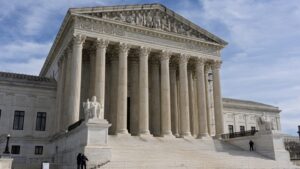In a significant development, a federal judge in Texas allowed a lawsuit against the FDA’s approval of medication abortion to proceed, despite the case lacking direct ties to his jurisdiction. This decision has drawn attention to the contentious practice of judge shopping, where litigants strategically choose judges likely to support their ideological objectives. The issue is particularly pronounced in Texas, where medication abortion is already banned, raising questions about the case’s venue.
Understanding Judge Shopping
Typically, cases in federal court are assigned to judges randomly to ensure impartiality. However, judge shopping circumvents this process, allowing litigants to select judges sympathetic to their views. A notable example is the recent legal challenges to medication abortion filed in Amarillo, Texas. The town has become a hotspot due to its sole federal judge, Matthew Kacsmaryk, known for his conservative stance on abortion.
Kacsmaryk previously made headlines by temporarily banning the abortion pill, mifepristone, nationwide. His decision was paused by the Supreme Court, which dismissed the case due to the plaintiffs’ lack of standing. Now, the case has been revived by state attorneys general, continuing the debate over judge shopping.
Mechanisms of Judge Shopping
With over 600 federal trial judges across more than 90 districts, plaintiffs can often choose a favorable venue. While districts are divided into divisions, each with its own judge, some allow plaintiffs to select divisions strategically. Amarillo’s single-judge division has attracted conservative activists seeking national injunctions against liberal policies.
Organizations like the Alliance for Hippocratic Medicine have even established local ties in Amarillo to file suits there, circumventing traditional venue requirements. This practice, seen in high-profile cases like former President Trump’s lawsuit against CBS, showcases the lengths to which plaintiffs will go to select favorable judges.
The Impact of Judge Shopping
Judge shopping undermines the justice system’s credibility by enabling plaintiffs to bypass impartiality. It skews federal jurisprudence, particularly in conservative single-judge divisions resistant to random assignment. This has pushed legal interpretations rightward, especially in the Fifth Circuit, where the Court of Appeals often diverges from national norms.
The Supreme Court frequently intervenes to correct lower court rulings, but plaintiffs can still delay national policies. Judge shopping influences case outcomes by allowing selective presentation of evidence, affecting high-profile cases’ development.
Efforts to Curb Judge Shopping
Efforts to address judge shopping have gained traction. The Judicial Conference and constitutional scholars have called for random case assignments to prevent manipulation. In 2024, the Conference issued guidance for district-wide case assignments, supported by prominent judges like Sixth Circuit Chief Judge Jeffrey Sutton.
Some districts have adjusted their rules to align with this guidance, but opposition remains. Critics, including certain Fifth Circuit judges and Senator Mitch McConnell, claim the guidance caves to political pressure, highlighting judge shopping’s role in empowering ideologically aligned judges.
Potential Solutions and Challenges
While the Judicial Conference’s guidance is nonbinding, districts can independently implement random assignment rules. Judges can also discourage judge shopping by limiting cases to those with local connections. However, voluntary compliance is insufficient; binding national rules are essential to address entrenched judge shopping practices.
The legal community and the public must continue advocating for reform to ensure fairness and impartiality in the judiciary, as exemplified by successful rule changes in some districts.






